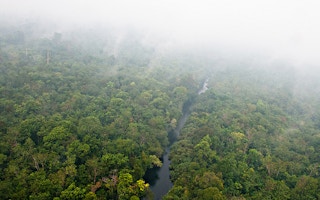The forest fires in Indonesia last year released 11.3 million tonnes of carbon per day, exceeding the daily rate of 8.9 million tonnes of carbon emissions from the whole of the European Union, a study says.
The 2015 fires were the worst since 1997 when a strong El Niño also fanned widespread fires, says the study published in Scientific Reports, which was a collaboration between scientists in King’s College London and the Center for International Forestry Research (CIFOR).
The practice of burning in Sumatra and Kalimantan, exacerbated by extended drought associated with El Niño, released 857 million tonnes of carbon dioxide from September to October 2015, which was 97 per cent of annual carbon emissions in Indonesia.
Martin Wooster, one of the study’s authors and an earth observation science professor at King’s College London, says the data produced from the study were based on satellite observation and on-site measurement of the air in Palangkaraya, the capital city of Central Kalimantan province which experienced the thickest smog during the 2015 fires.
“
The governments are very aware of the issue, primarily because carbon dioxide was released along with smoke that greatly impacted the air quality of the [South-East Asian] region, not only of Indonesia.
Martin Wooster, earth observation science professor, King’s College London
“There have been some isolated studies before where people artificially set fires in the lab to try to understand the chemical characteristics of peatland fire smoke in Indonesia. But no one had done this for natural fires, and especially not on the kind of extreme fires seen in 2015. We are the first people to do that,” says Wooster.
The methodology of Wooster’s team has resulted in more reliable data compared to previous studies. On-site measurement found that the smog was composed mainly of carbon dioxide, carbon monoxide and methane.
Wooster believes their study is more than enough to prod the Indonesian government to take serious steps in overcoming the problem because its impact has been severe and life-threatening.
“Every year, the global atmospheric CO2 concentration is rising, and in 2015 it rose more than any other year since measurements began. The governments are very aware of the issue, primarily because carbon dioxide was released along with smoke that greatly impacted the air quality of the [South-East Asian] region, not only of Indonesia,” he says.
Wooster notes the particulates in the atmosphere in some parts of Indonesia reached more than five times the hazardous levels, reducing visibility to a few hundred metres in places.
Sugarin, head of the Climatic and Meteorological Agency (BMKG) station in Riau, Sumatra, admits that the Indonesian government is now more serious in tackling the issue although he says El Niño will not come again this year, and “the dry season will not bring severe drought as well”.
He says Riau province is now in a state of “emergency alert” for peatland fires, with 15 hotspots under watch. This means the central government is ready to send helicopters for “water bombings” although there are not many hotspots found.
“We are ready for the worst case this year even though it is unlikely that the same catastrophe will happen again,” says Sugarin.
This piece was produced by SciDev.Net’s South-East Asia & Pacific desk.










